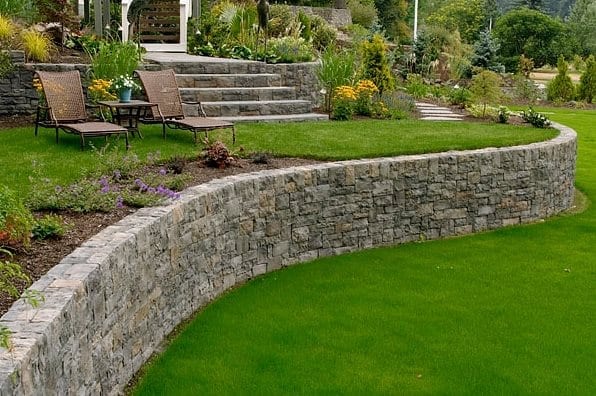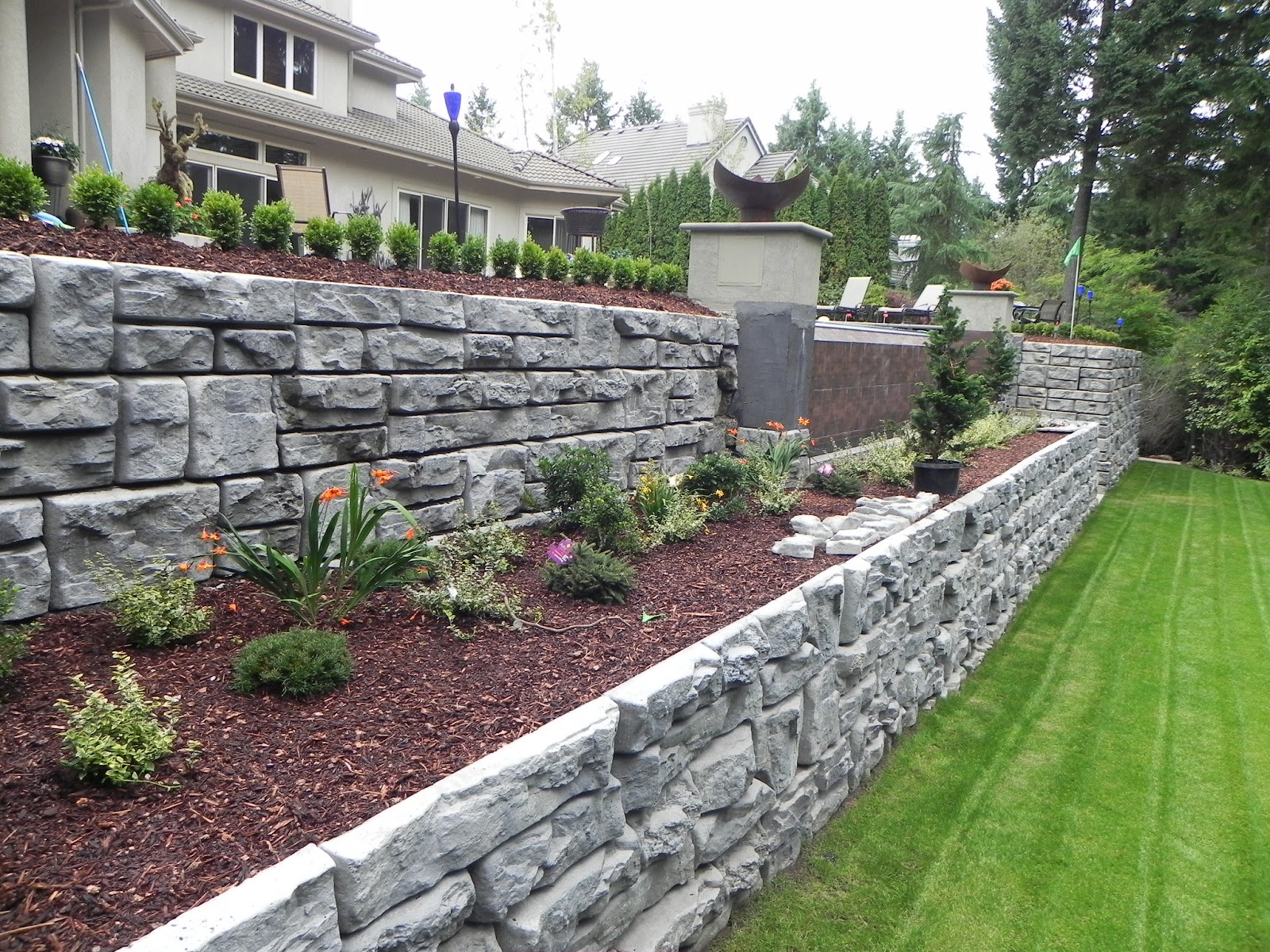Enhancing Building Security: The Role of Retaining Walls in Soil Retention and Disintegration Control
Keeping wall surfaces stand as quiet guardians, playing a vital function in soil retention and erosion control. By exploring the subtleties of different kinds, design considerations, construction techniques, and maintenance tips linked with maintaining wall surfaces, a much deeper understanding of their essential duty in enhancing residential property stability emerges.
Value of Retaining Walls in Stability
Maintaining wall surfaces play an essential duty in holding back dirt, preventing disintegration, and creating level surface areas in sloped areas. By offering architectural assistance, maintaining walls aid to redistribute lateral pressure created by soil, stopping landslides and slippage.
Maintaining wall surfaces are especially crucial in uneven or irregular surfaces where soil disintegration is a typical occurrence. Without sufficient assistance, soil disintegration can bring about the deterioration of landscapes, compromising the integrity of frameworks and posing dangers to occupants. Preserving walls serve as obstacles, supporting the dirt and avoiding it from moving downhill throughout heavy rains or various other environmental stress factors.
Additionally, retaining walls provide lasting benefits by lowering upkeep costs related to dirt erosion and land instability. By spending in well-designed maintaining walls, homeowner can make sure the long life and sustainability of their landscapes while promoting a secure and aesthetically appealing setting.

Kinds Of Retaining Walls for Disintegration Control
Commonly made use of in landscaping and civil design jobs, different types of preserving walls serve as reliable solutions for erosion control in varied surface conditions. Gravity keeping walls are strong structures that count on their weight to withstand the stress of the soil behind them. They appropriate for low to tool height applications and are generally constructed from concrete or stone. Cantilever retaining walls, on the other hand, are developed with a thicker base and utilize a bar arm to withstand the dirt stress. These walls are generally made use of in locations where space is limited.
For taller walls or where area is a restraint, anchored keeping wall surfaces are usually used. When choosing the proper type of maintaining wall surface for erosion control, aspects such as dirt structure, wall height, and site conditions have to be thoroughly thought about to guarantee lasting stability and performance.
Layout Factors To Consider for Soil Retention
When taking into consideration design aspects for effective dirt retention services,Including the concepts of architectural engineering and environmental sustainability is crucial. When creating for dirt retention, it is essential to assess the certain needs of the website, including soil composition, water drainage patterns, and incline stability. The height and area of the preserving wall surface are vital elements that affect the total layout. Designers must additionally think about the stress applied by the preserved soil and potential side tons to guarantee the framework's stability with time.
Furthermore, the product selection for the preserving wall is critical in boosting longevity and performance. Concrete, timber, gabion baskets, and all-natural stone prevail products utilized in keeping wall building, each with its one-of-a-kind advantages and factors to consider. Appropriate drainage devices, such as weep openings and French drains pipes, should be incorporated right into the layout to stop water accumulation behind the wall surface, which can lead to structural failing and erosion.
Construction Techniques for Maintaining Wall Surfaces
When implementing layout factors to consider for efficient soil retention, the building and construction methods for preserving wall surfaces play an essential duty in ensuring architectural stability and long-term stability. The success of a retaining wall largely depends upon the construction techniques used. One typical method is read here the gravity wall, which depends on the weight and mass of the wall surface itself to stand up to the pressure of the kept soil. Gravity wall surfaces are ideal for reduced to medium elevations and are relatively simple to construct. Retaining Walls Sunshine Coast.
Another extensively used construction technique is the discover this cantilevered wall surface, which uses a concrete slab foundation that extends backwards into the kept soil. This design gives additional security and is ideal for tool to high maintaining walls. For taller frameworks, enhanced soil methods such as making use of geogrids or dirt nails can be employed to enhance the wall's strength and stability.

Upkeep Tips for Residential Property Security
To make sure lasting residential or commercial property security, normal upkeep methods are important for protecting the integrity of preventing and maintaining walls erosion issues. Cleansing the surface of the maintaining wall surfaces can also assist keep their structural honesty by removing dust, debris, and plants that can weaken the wall surface over time.
Along with aesthetic examinations and cleansing, it is important to inspect the water drainage systems connected with the preserving walls. Guaranteeing that drains pipes are free from obstructions and functioning effectively can protect against water buildup behind the wall surfaces, which can cause stress and potential failure. Properly working drain systems are important for managing water flow and minimizing the threat of erosion.
Frequently maintaining and monitoring maintaining walls according to these suggestions can expand their life-span and add to the overall stability of click resources the building.
Verdict
In conclusion, preserving walls play an essential function in enhancing building stability by stopping dirt erosion and maintaining dirt in area. Normal upkeep of keeping wall surfaces is essential to ensure lasting security and defense against disintegration.
For taller walls or where space is a restriction, secured retaining wall surfaces are frequently employed. These wall surfaces make use of cords or strips that are secured into the dirt or rock behind the wall surface to supply additional support. When picking the proper type of keeping wall for disintegration control, factors such as soil make-up, wall surface elevation, and website conditions have to be meticulously considered to make sure long-lasting stability and performance.
One typical strategy is the gravity wall surface, which relies on the weight and mass of the wall itself to stand up to the pressure of the kept soil. Cleansing the surface area of the retaining walls can likewise help preserve their architectural stability by removing dirt, debris, and greenery that can weaken the wall over time.